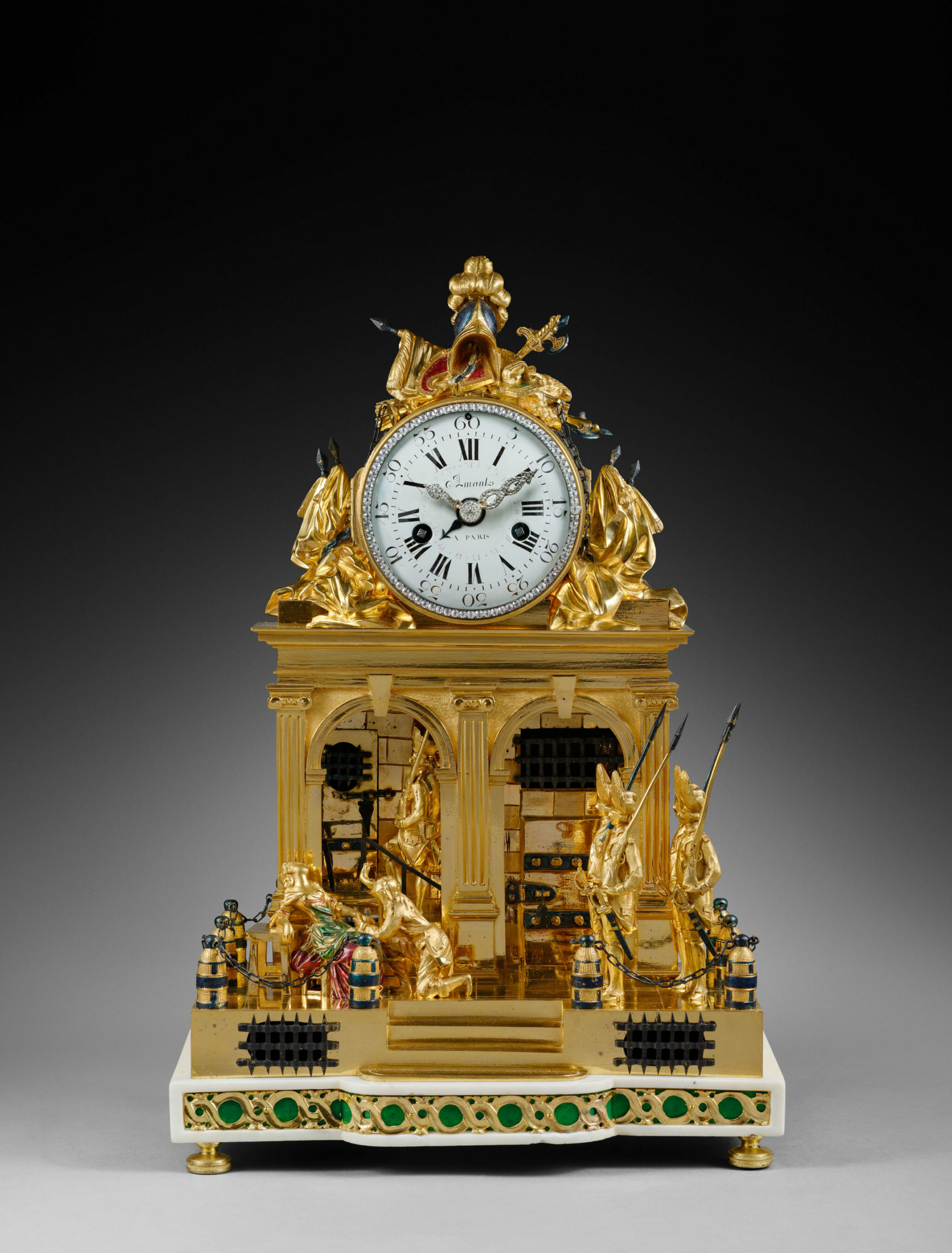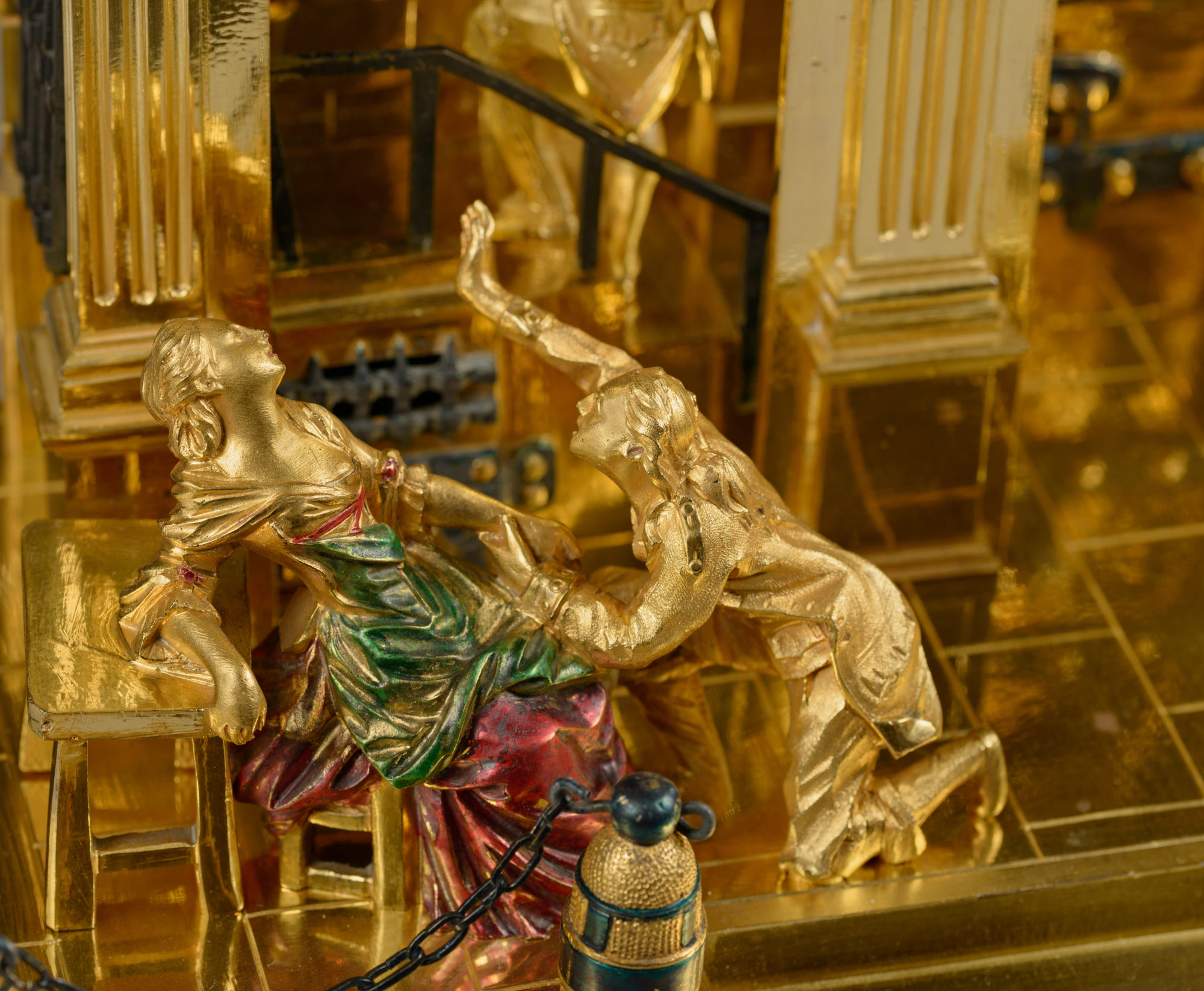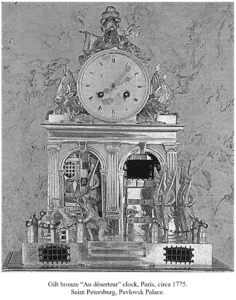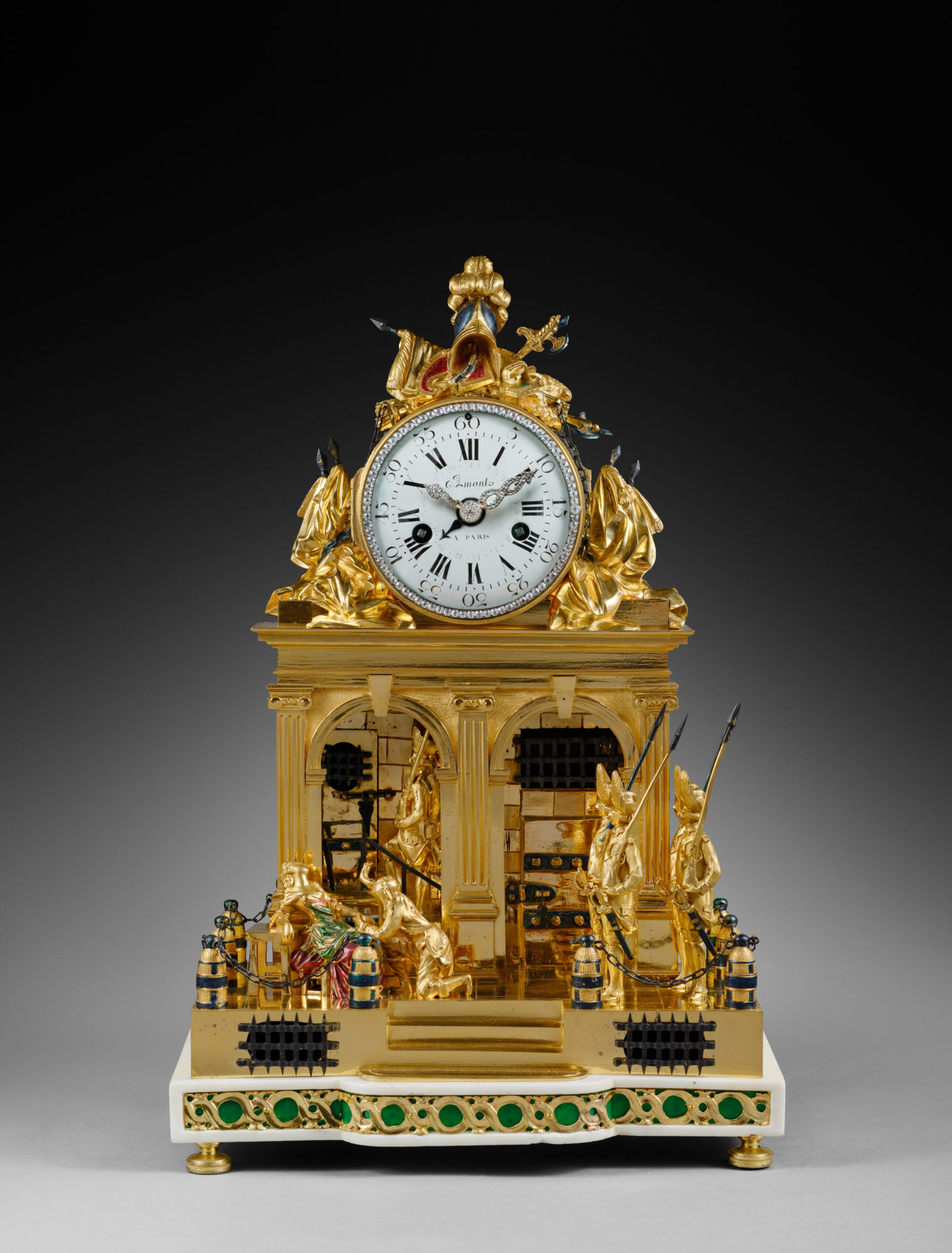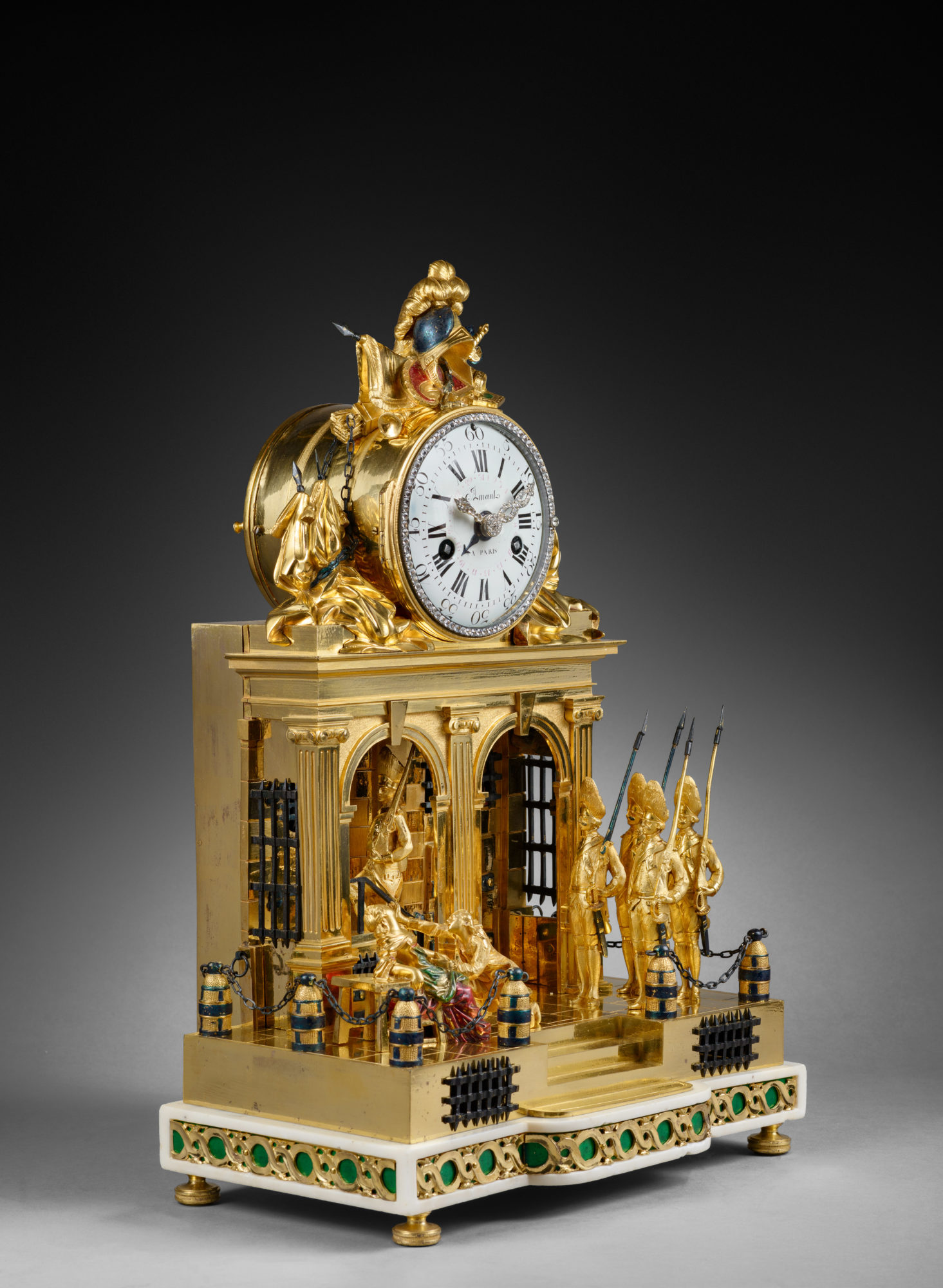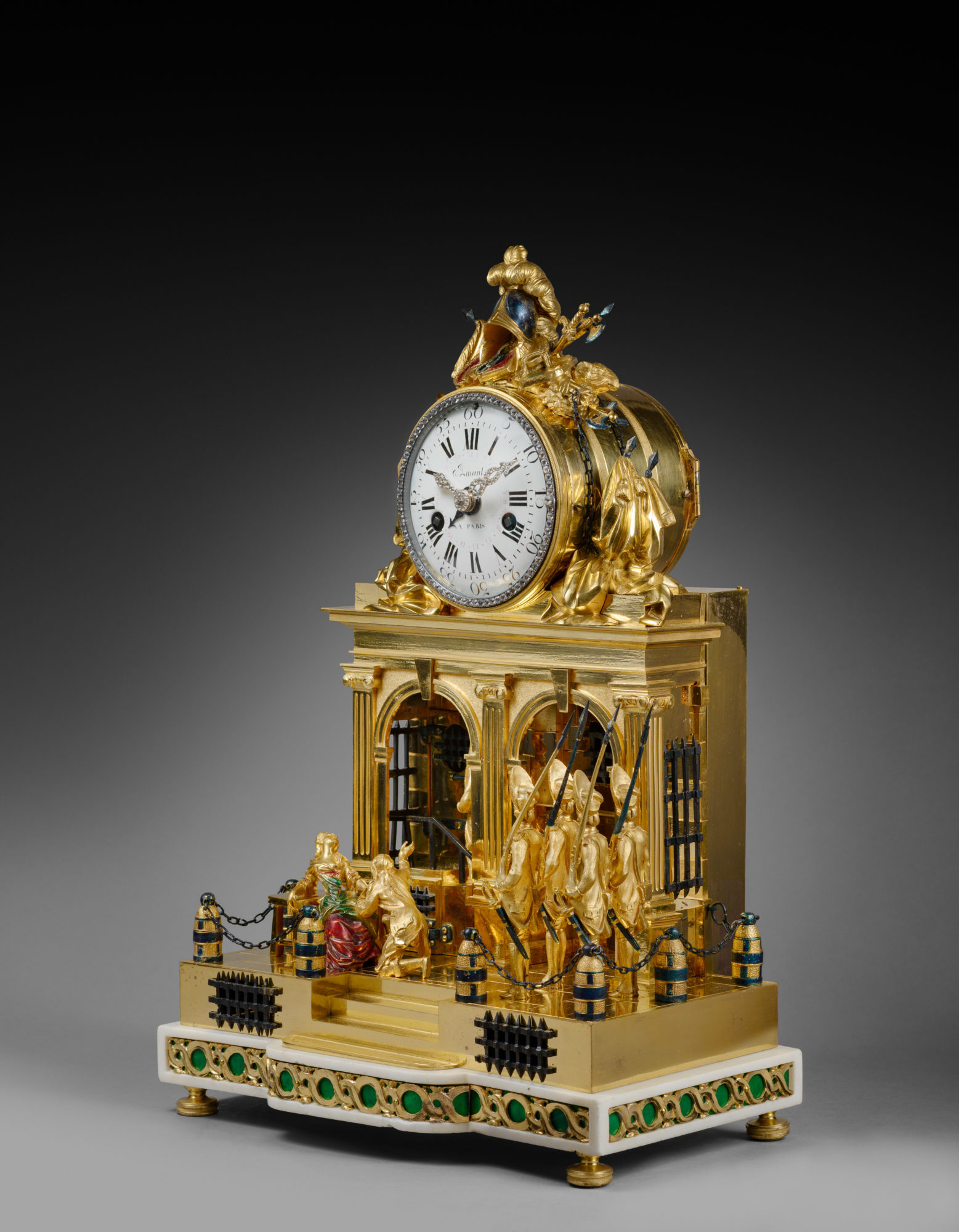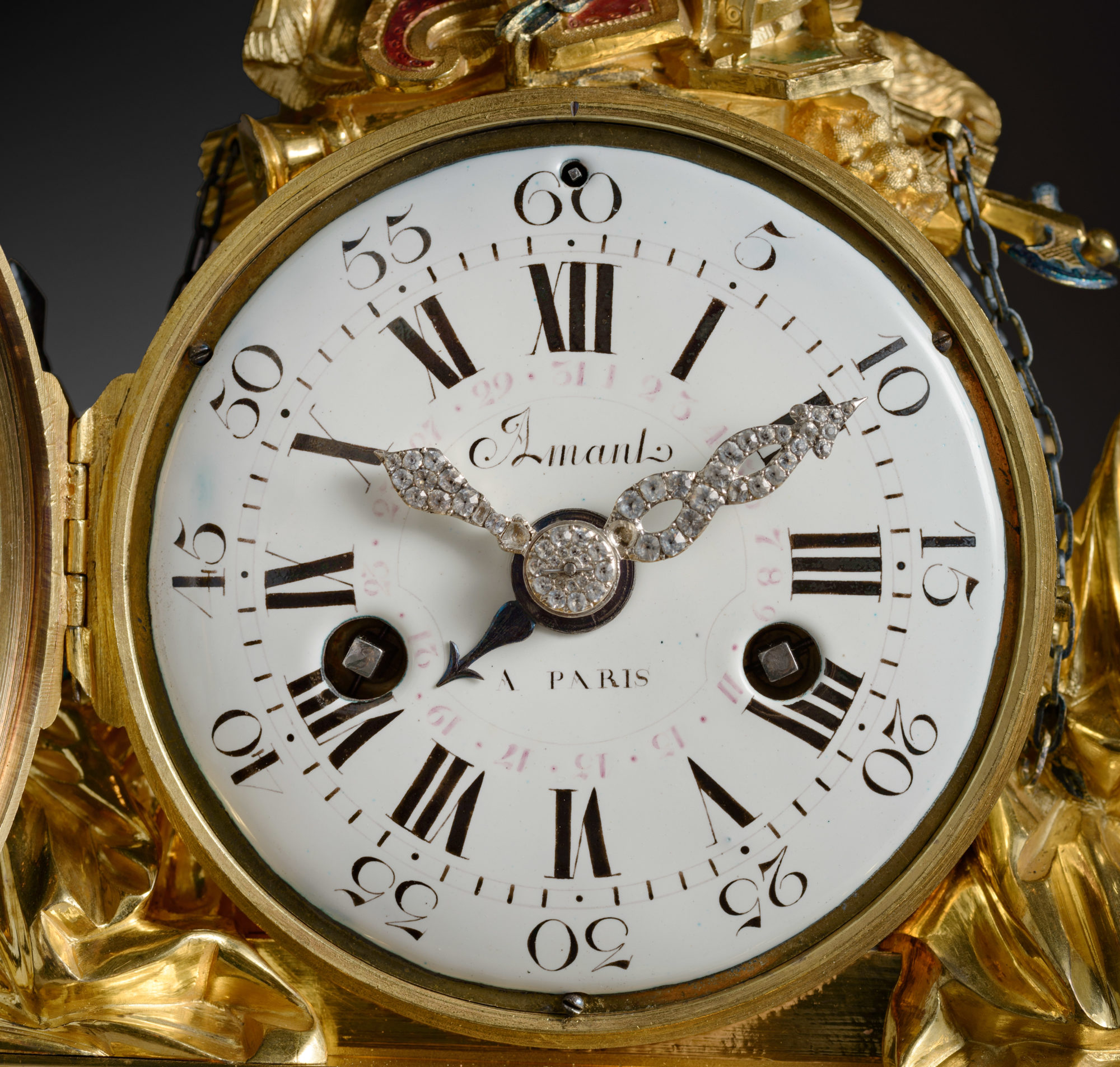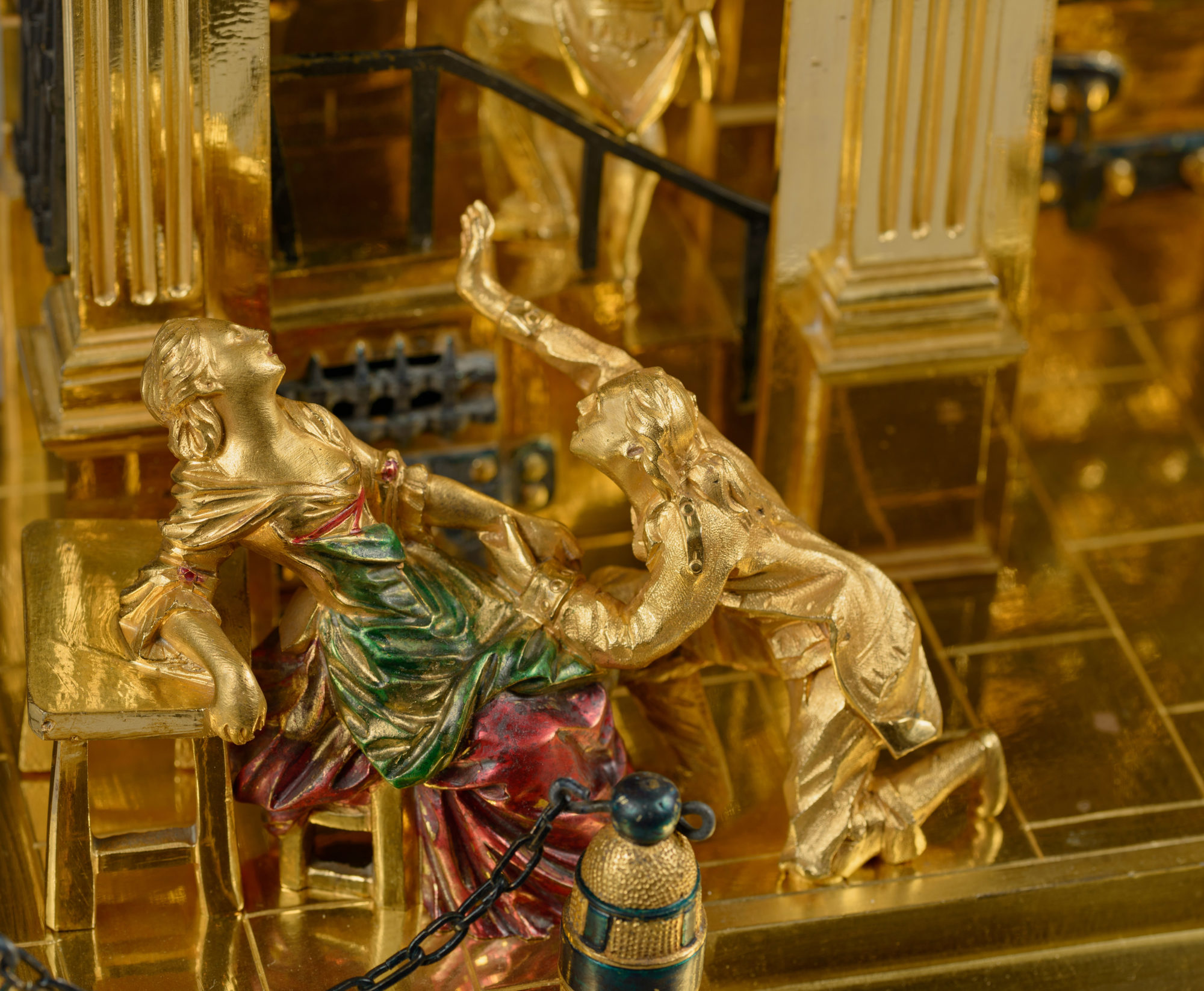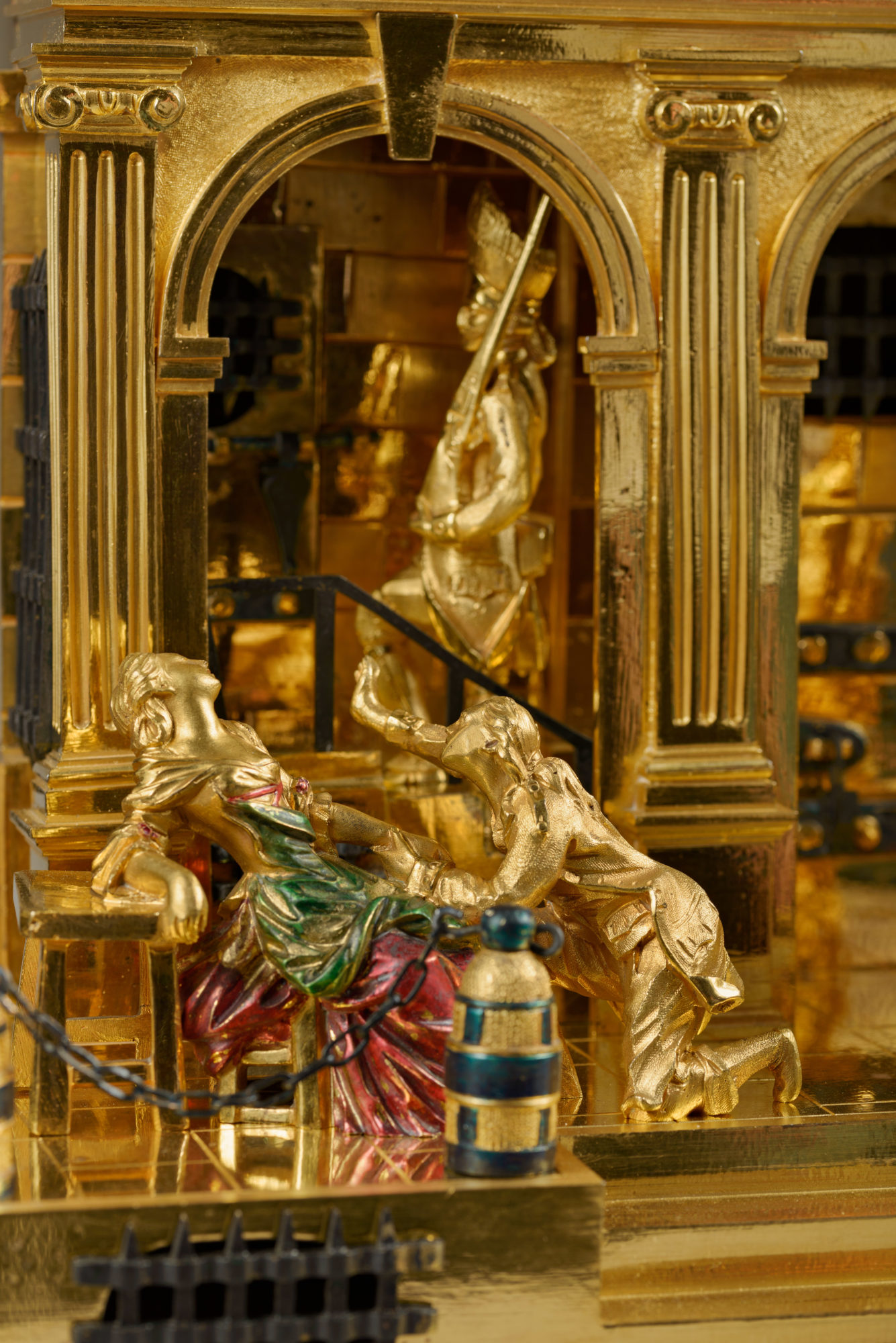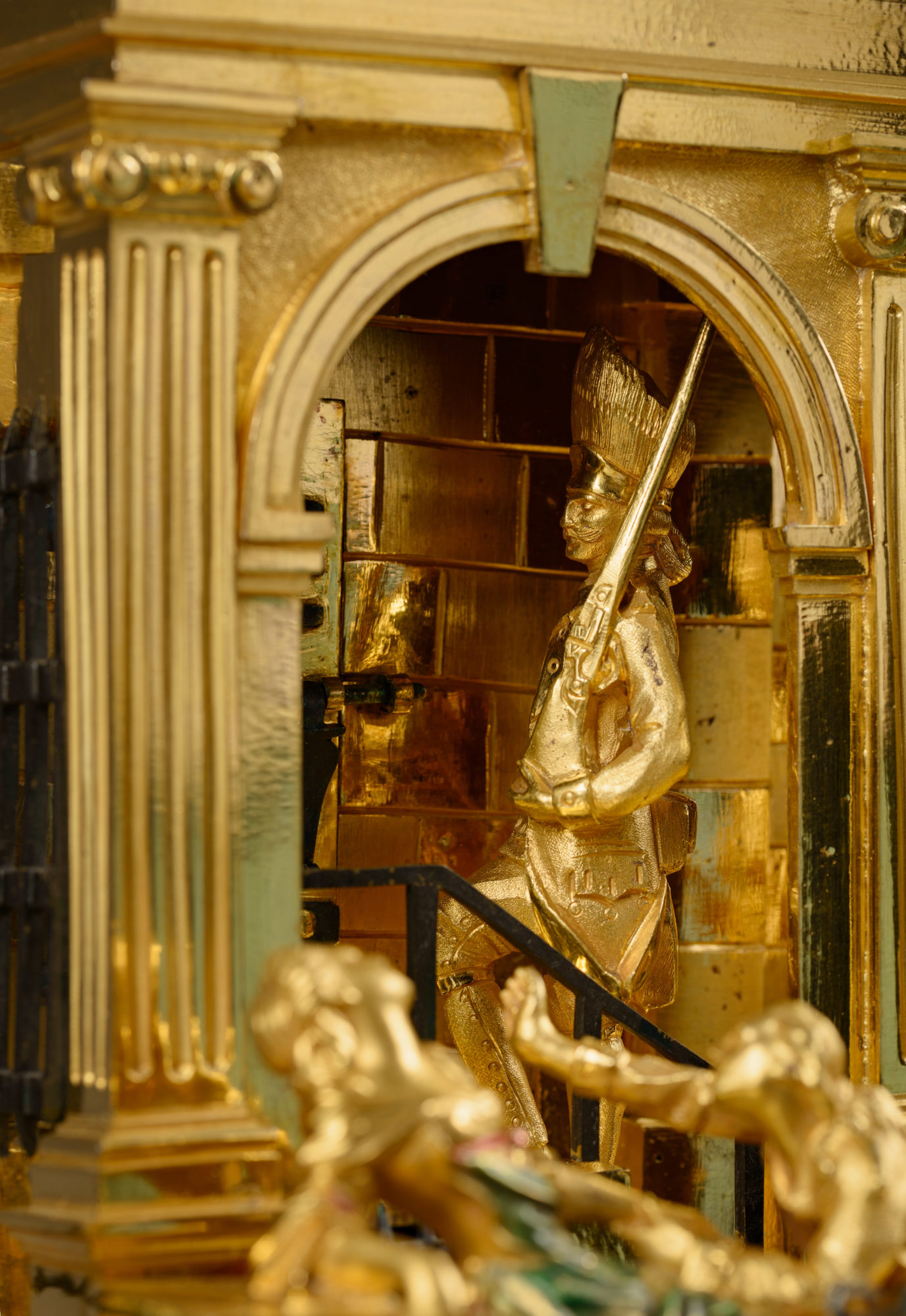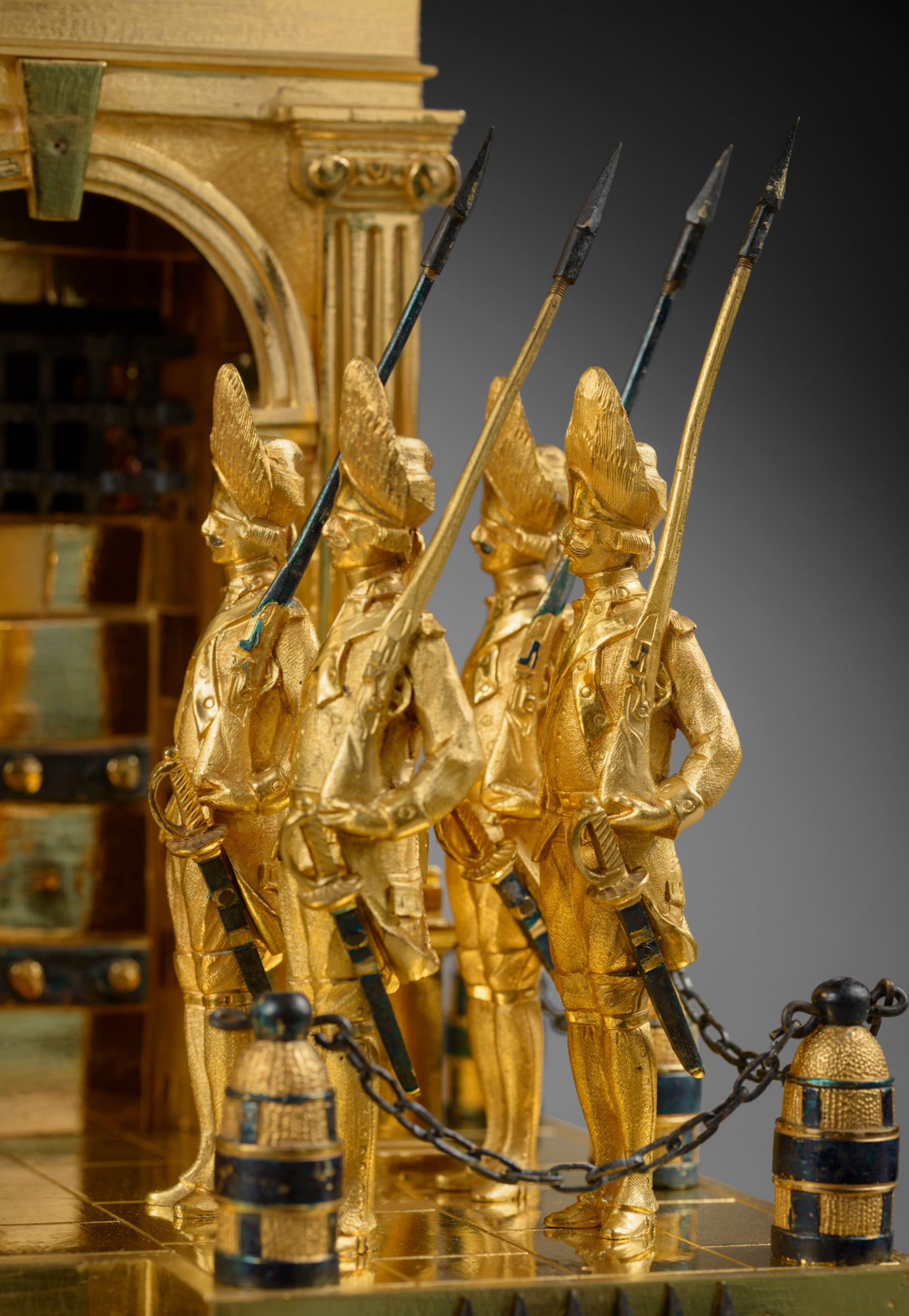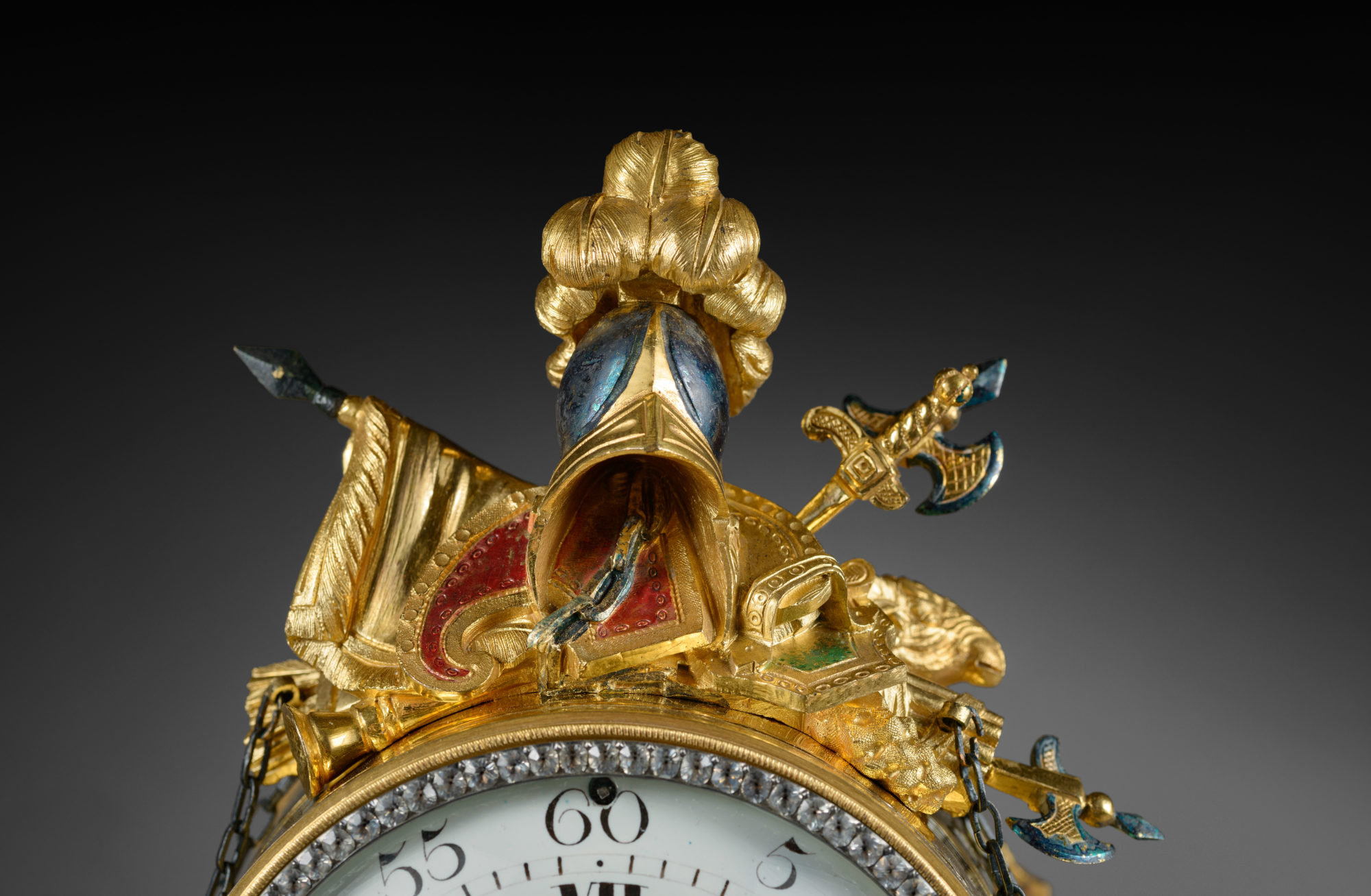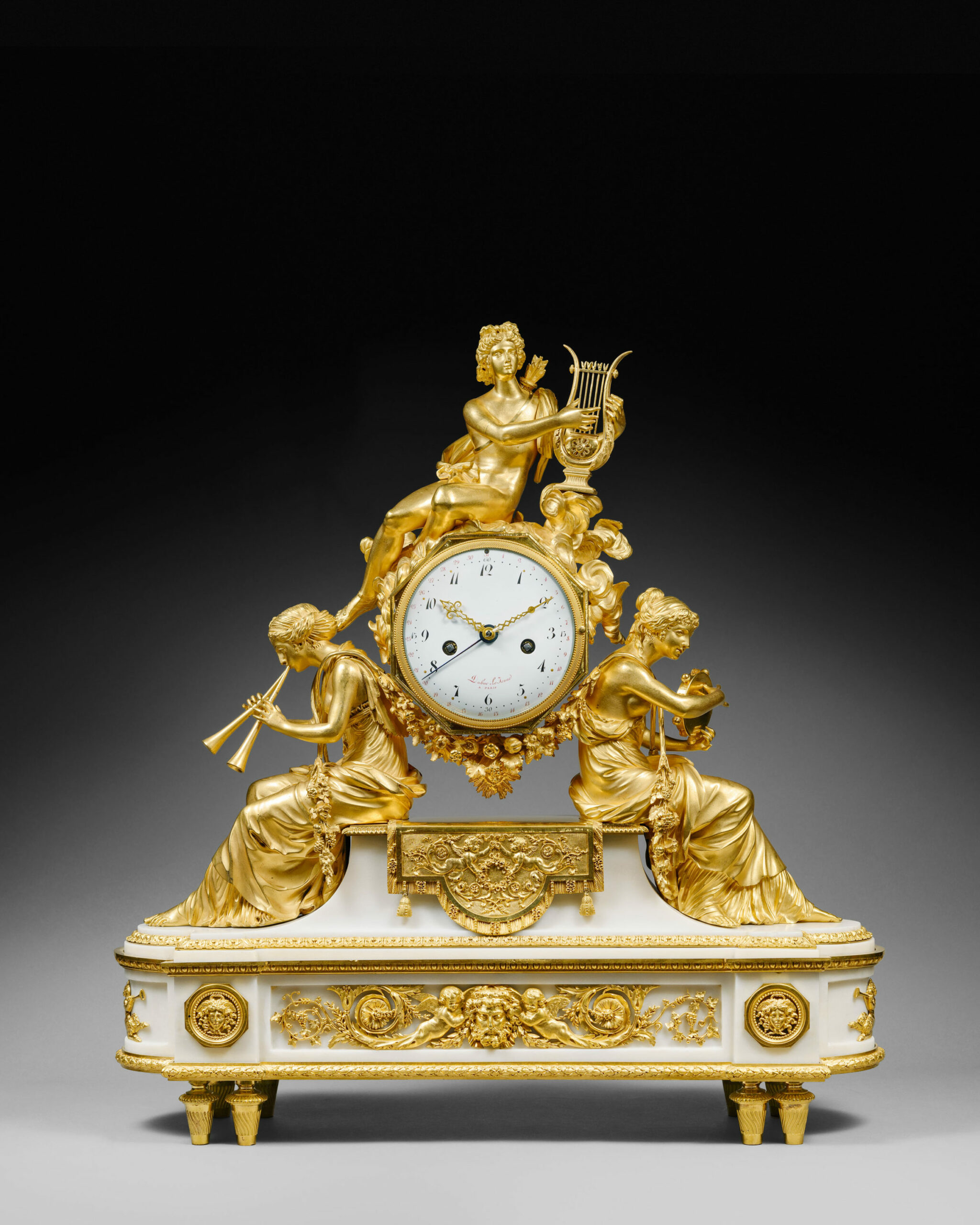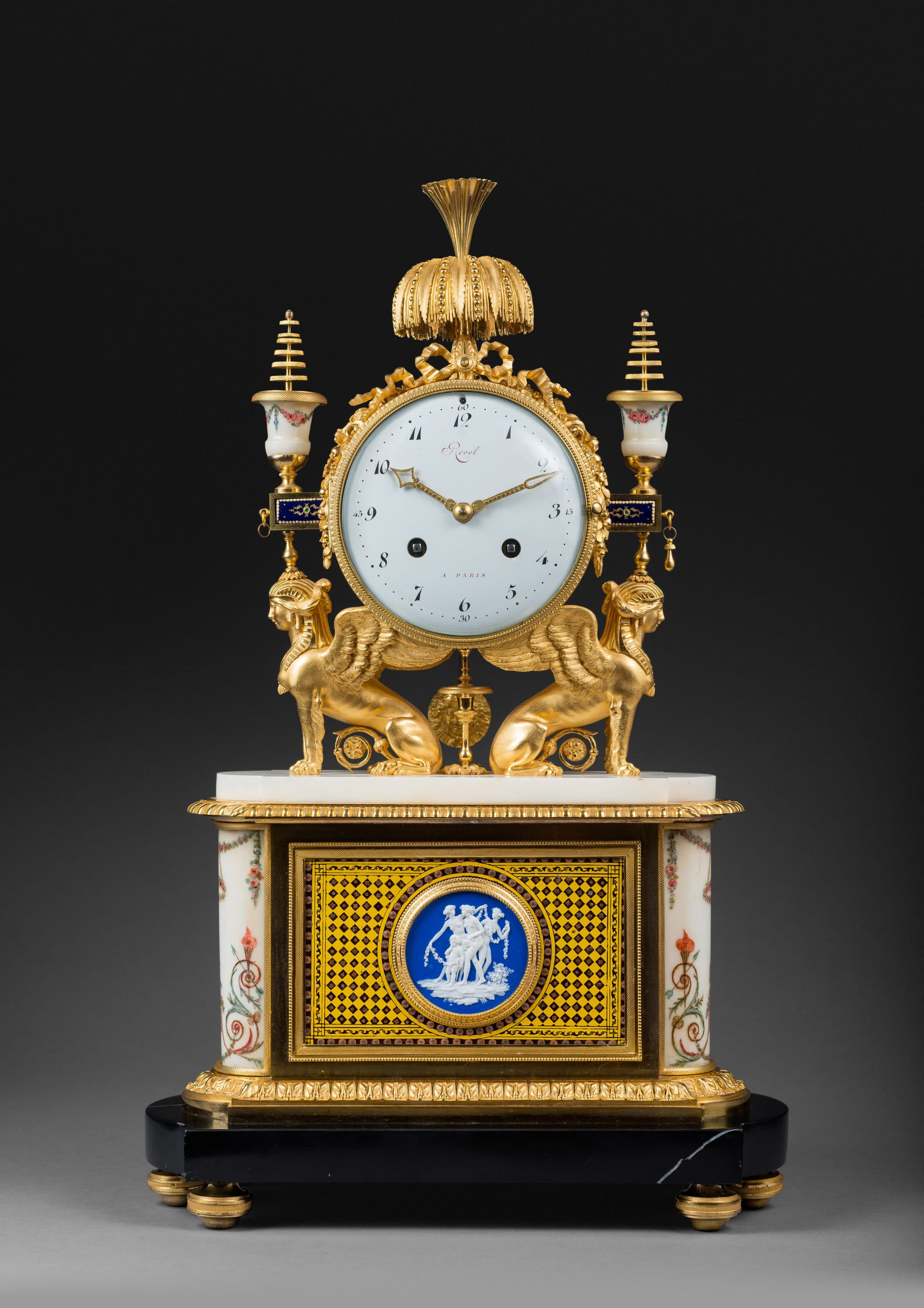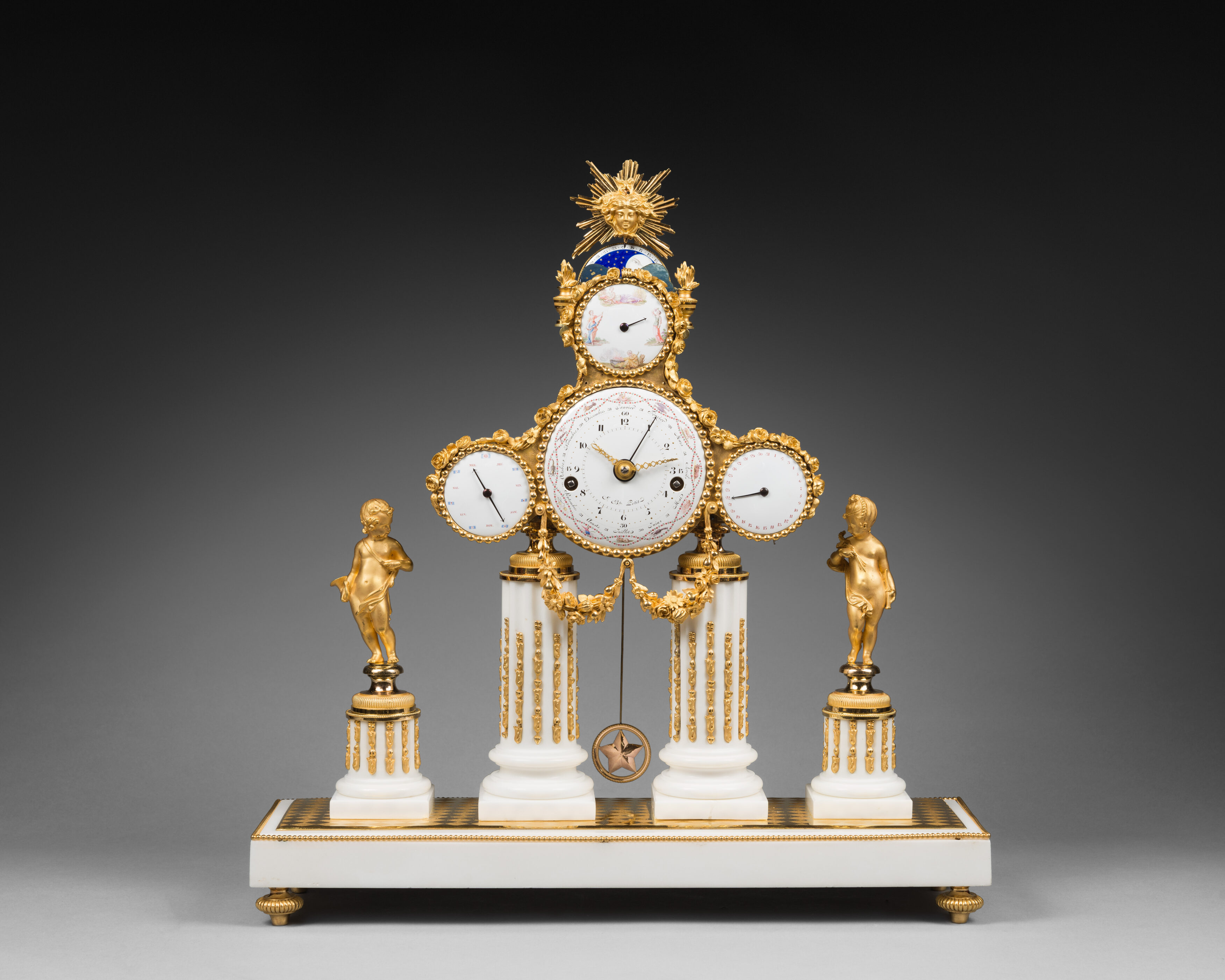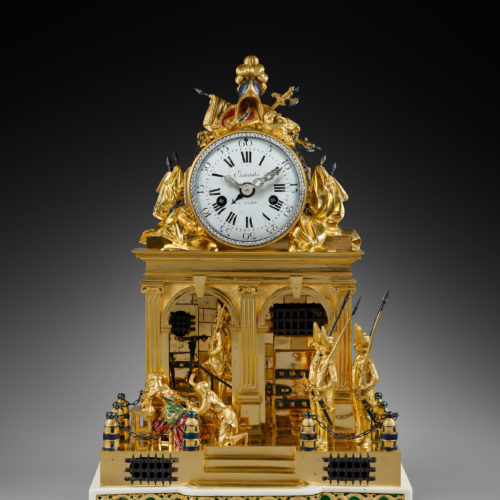Rare Gilt and Polychrome Bronze “Au Déserteur” Mantel Clock
The round enamel dial, signed “Amant à Paris”, indicates the Roman numeral hours and the Arabic numeral five-minute intervals and date by means of three hands, two of which are set with paste stones; the third is made of blued steel. The architectural case is made of very finely chased gilt and polychrome bronze. The upper portion of the case, featuring military motifs such as banners, plumed helmets, swords, axes, and shields, is supported by a building with an arched façade with fluted pilasters and dungeons in the background. On a terrace, engraved in imitation of paving stones, and surrounded by pillars linked by chains, a young man kneels while bidding goodbye to a despondent young woman. Behind them, four soldiers are waiting to execute the prisoner. The quadrangular breakfront Carrara marble base is adorned with entrelac friezes against a green ground. The clock is raised upon four chased bun feet.
Discover our entire collection of antique mantel clocks for sale online or at the gallery.
La Pendulerie is the specialist in fine and rare antique clocks, based in Paris.
The theme of this clock was inspired by the comic opera “Le déserteur” (The Deserter), by composer Pierre-Alexandre Monsigny (1729-1817). The opera was first performed on March 6, 1769 at the Hôtel de Bourgogne, by the Comédie-Italienne. Based on true events, the opera tells the story of a French soldier named Alexis who deserts his regiment, believing that his fiancée Louise is about to marry someone else. He is arrested and thrown into prison. When she learns what has happened, Louise throws herself at the king’s feet and succeeds in convincing him to pardon the young man. She is so exhausted, however, that upon her return she collapses with fatigue before she is able to announce the good news. Luckily, Louis XV arrives just in time to prevent Alexis’s execution. The opera was an immediate success. The present clock depicts its most dramatic moment: the farewell scene between Alexis and Louise, with the execution squad standing in the background.
Among the rare known examples of this clock, one was formerly in the collection of the Count of Rosebery in Mentmore Towers (sale Sotheby’s, May 19, 1977, lot 445); a second clock is illustrated in the exhibition catalogue “La folie d’Artois à Bagatelle”, 1988, p. 85, fig. 7. A further “Deserter” clock is in the Pavlovsk Palace (illustrated in A. Kuchumov, Pavlovsk, Palace & Park, Leningrad, 1975, illustration 97). A “Deserter” clock was described in the collection of the Marquis de Broglie in 1786: “A clock representing a prison and a scene with a deserter, surmounted by an enamel dial with paste-stone bezel, with military trophy, on a marble base…”.
After becoming a master in 1751, as the son of a master, Jean-Louis Amant opened a workshop in the rue Gracieuse and was very successful. Like the best Parisian clockmakers, he called on the finest bronze casters and cabinetmakers of the day for his clock cases, including Jean Goyer, Nicolas Bonnet and the Osmonds.
